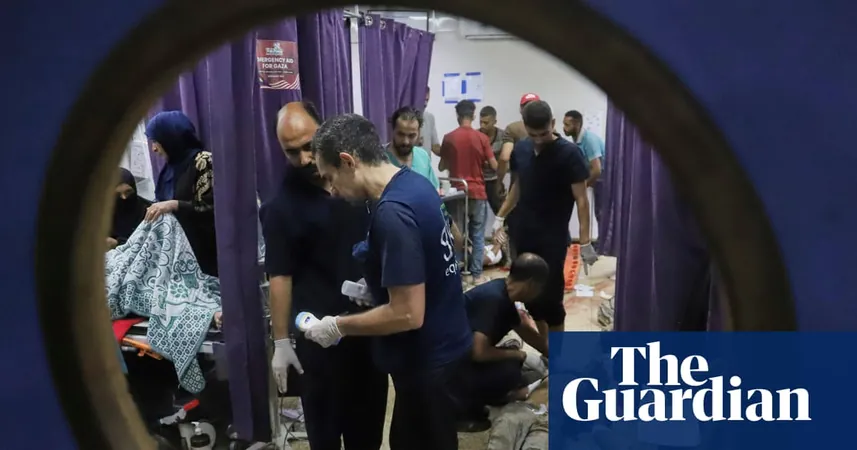
COVID Cases Surge This Summer: What You Need to Know and Why Data Might Mislead You
2025-07-15
Author: Lok
A Surprising Summer Spike in COVID Cases
Summer is often seen as a season of freedom, fun, and sun, but COVID-19 is throwing a wrench into that perception. Research indicates that COVID-19 tends to experience spikes twice a year—once in winter and again during summer—and we're already beginning to see case numbers rise across the country.
Data Dilemma: Why Tracking COVID Is Tougher Now
Understanding the true state of COVID-19 today is more complicated than it used to be, thanks to significant changes in reporting protocols by public health organizations. The Centers for Disease Control and Prevention (CDC) has not been able to keep its COVID data as accurate as it was before. With the public health emergency declaration revoked, many tools previously depended upon for gathering data are no longer available. Hospitals are no longer mandated to report COVID statistics, leading to a distorted view of the actual case numbers.
"In many areas, including smaller public health departments, the lack of funding has resulted in unreliable data collection and reporting," says Elisabeth Marnik, a scientist and science communicator from Maine. This has made it challenging for people to gauge the risk of COVID-19 in their communities, especially as more cases emerge this summer.
Perception vs. Reality: The Summer COVID Conundrum
Interestingly, many individuals, including some healthcare professionals, have begun to downplay COVID-19 as a summertime concern. This results in reduced testing, further skewing the reported cases. Dr. Emily Landon, medical director of Infection Prevention and Control at UChicago Medicine, pointed out, "The federal government's lack of emphasis on COVID has made it seem like this virus is fading away, when in reality, it continues to pose a risk."
Alternative Tracking: Wastewater Data
While traditional reporting may paint a misleading picture, alternative methods for tracking COVID infections are gaining traction. Wastewater monitoring can provide insights into community infection rates by analyzing sewage, which captures infection data more comprehensively than singular tests. Marnik suggests using platforms like the CDC's COVID wastewater data dashboard or Wastewater Scan for current insights.
Regions at Risk: What the Numbers Show
Recent data indicates a worrying trend: states like Florida and Alabama are witnessing rising COVID levels. Notably, the West Coast is also reporting high SARS-CoV-2 levels detected in wastewater, leading experts to believe we might be on the brink of another summer spike. However, predicting the scale of this increase remains elusive.
Experts confirm that hospitals are witnessing a surge in patients with COVID-19 symptoms, highlighting that many cases go unreported, as a significant number of individuals may simply treat their symptoms as a cold.
The Rise of Nimbus: A New Variant Takes Center Stage
Currently, the predominant variant affecting the U.S. is NB.1.8.1 or Nimbus, which has seen a steady uptick in cases. While this variant has been linked to other outbreaks, its impact on hospitalization rates has been relatively mild so far. As we look towards the U.K.—which often sets trends for the U.S.—experts remain optimistic, noting that although they saw a rise in COVID cases, hospitalization rates didn’t follow suit.
Staying Safe: How to Protect Yourself This Summer
With the current positivity rate at 3.1%, up from 2.9%, now is the time to take precautions. If you're over 65 or have pre-existing conditions, consider getting your second COVID shot if you haven't already. Also, prioritize good air quality in enclosed spaces: keep windows open and turn on fans to improve ventilation.
If you're feeling unwell and have symptoms reminiscent of influenza, getting tested is crucial. Treatments such as Paxlovid can not only expedite recovery but also reduce the risk of long COVID.
Final Thoughts
As summer unfolds, the potential for increased COVID-19 cases looms large. Being informed and vigilant is your best defense against the lurking threats of this virus. Stay tuned, take care of your health, and don’t underestimate the impact of COVID-19, even in the warmer months.




 Brasil (PT)
Brasil (PT)
 Canada (EN)
Canada (EN)
 Chile (ES)
Chile (ES)
 Česko (CS)
Česko (CS)
 대한민국 (KO)
대한민국 (KO)
 España (ES)
España (ES)
 France (FR)
France (FR)
 Hong Kong (EN)
Hong Kong (EN)
 Italia (IT)
Italia (IT)
 日本 (JA)
日本 (JA)
 Magyarország (HU)
Magyarország (HU)
 Norge (NO)
Norge (NO)
 Polska (PL)
Polska (PL)
 Schweiz (DE)
Schweiz (DE)
 Singapore (EN)
Singapore (EN)
 Sverige (SV)
Sverige (SV)
 Suomi (FI)
Suomi (FI)
 Türkiye (TR)
Türkiye (TR)
 الإمارات العربية المتحدة (AR)
الإمارات العربية المتحدة (AR)